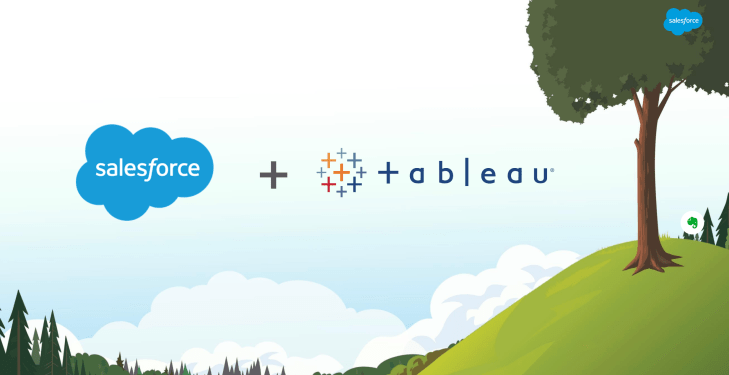Back in the 2010 timeframe, it was common to say that content was king, but after watching Google buy Looker for $2.6 billion last week and Salesforce nab Tableau for $15.7 billion this morning, it’s clear that data has ascended to the throne in a business context.
We have been hearing about Big Data for years, but we’ve probably reached a point in 2019 where the data onslaught is really having an impact on business. If you can find the key data nuggets in the big data pile, it can clearly be a competitive advantage, and companies like Google and Salesforce are pulling out their checkbooks to make sure they are in a position to help you out.
While Google, as a cloud infrastructure vendor, is trying to help companies on its platform and across the cloud understand and visualize all that data, Salesforce as a SaaS vendor might have a different reason — one that might surprise you — given that Salesforce was born in the cloud. But perhaps it recognizes something fundamental. If it truly wants to own the enterprise, it has to have a hybrid story, and with MuleSoft and Tableau, that’s precisely what it has — and why it was willing to spend around $23 billion to get it.
Making connections
Certainly, Salesforce chairman Marc Benioff has no trouble seeing the connections between his two big purchases over the last year. He sees the combination of MuleSoft connecting to the data sources and Tableau providing a way to visualize as a “beautiful thing.”
“Tableau will have access to all that data as those two technologies come together. MuleSoft is such a powerful kind of octopus, if you will, it’s got its tentacles into everything. [When you combine that with] the ability to see and understand all of the things that are going on in MuleSoft, I can’t wait to see what Tableau does there,” Benioff said during a media/analyst call earlier today.
Laurie McCabe, co-founder and analyst at SMB Group, sees this as helping not just MuleSoft, but also bringing together the many disparate pieces Salesforce has bought over the years. “Salesforce has acquired a lot of different products over the years. Its customers also use a lot of other business software solutions. Tableau can provide one analytics interface across all these different products to help customers see what’s going on in a more comprehensive way across different parts of their businesses,” she told TechCrunch.
I’ve looked at clouds from both sides now
But it’s more than two purchases having a certain synergy, although that’s certainly a nice bonus for Salesforce if it actually works out that way. More importantly, these acquisitions are worth spending this princely sum precisely because it gives Salesforce full access to data wherever it lives, whether that’s the cloud or on prem. In today’s hybrid world that’s an important piece of the enterprise puzzle, one that even AWS recognized for the first time last year when it announced Outposts.
If Salesforce is truly going to gain the holy grail of customer understanding, that full 360-degree view, it needs its data tentacles to reach into other systems, even old legacy ones, to pull all of that data together into a single view. And while Benioff acknowledged that Salesforce Wave and Einstein Analytics are built to provide a view of Salesforce data, having Tableau in the fold gives it a way to visualize any kind of data, anywhere, wherever it lives. That’s a powerful idea, one that didn’t escape Benioff.
“And I’ll tell you, it was kind of a surprise to me, because coming in, I knew [Tableau CEO] Adam [Seplisky] from AWS — he was with Amazon for more than a decade and as a pioneer, but he really convinced me that his vision of having a multiple deployment capability for this specific technology is very powerful. And by the way, we also have that with MuleSoft as well,” Benioff said in the media/analysts call. That multi-cloud view, one which Google also was careful to emphasize in its media/analyst call could be a key success factor of both these deals for Salesforce.
Whatever the reason, and there are probably many when it comes to spending this kind of money on a company, the chief reason could be providing a way for customers to understand their data wherever it may be. Clearly, Google thought it was a big deal when it bought Looker. Salesforce paid substantially more for the privilege. Both companies are making a big bet that data is king and will remain so, and while it looks good, just ask Content how that worked out.
